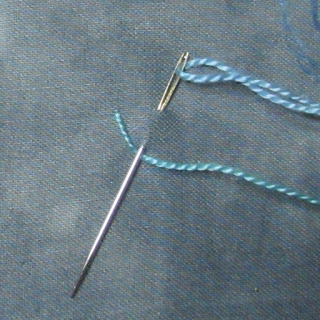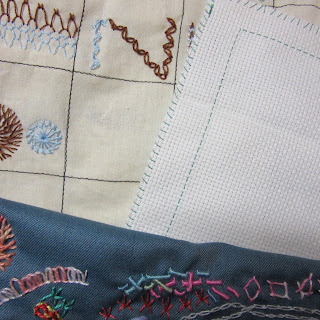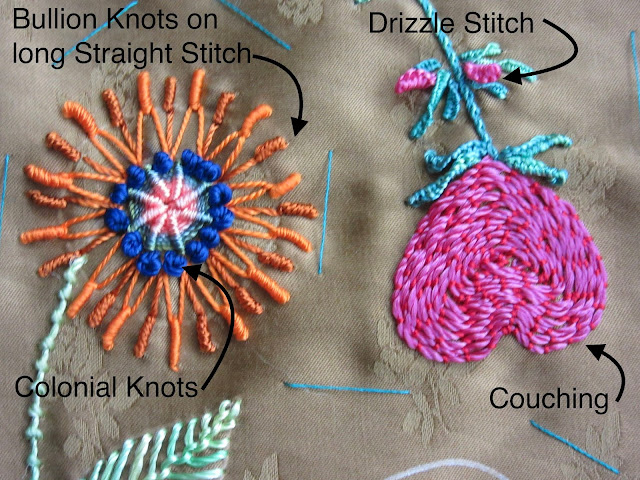Welcome to Sunday Stitch School.
Today let's take a field trip to India and learn Chemanthy Stitch.
Actually I have noticed that there are two versions of this beautiful stitch, one simpler, which we will learn today.
The more complex version, I will use for a future lesson.
It was on Deepa's
This and that...my random thoughts, that I found this stitch. Deepa has made a smart colour chart to illustrate where to insert and exit the needle. It makes stitching so clear, that I have made one for myself, too.
Before you start stitching, mark the two circles with a marking pen, and stretch the fabric in a hoop. Keep the coloured dots in your head.
Take the thread out from the yellow dot, insert the needle at the red dot and exit at the green.
Pull the thread through.
Next step. In at black, out at blue.
Keep the thread under the needle, and pull through.
When you stretch the thread you can see that an X has formed, in fact a kind of Herringbone Stitch.
Now, repeat the red/green stitch. Pull through.
Once again, in at black, out at blue and keep the thread
under the needle.
Repeat until you have a fan, a half or a full circle.
Deepa told me that Chemanthy is a south Indian name. She had heard this stitch being called Shefali Stitch, too. Shefali is the name of a beautiful flower, Night Flowering Jasmine.
The stitch was published in the Stitch magazine in 2005 as an Indian embroidery stitch.
As far as I can see Shefali is a flower with spiky petals. The more complex version of the Chemanthy Stitch (which I will feature in a future lesson) has those spikes.
On another website I read that Chemanthy means chrysanthemum. The flower I made in the example above reminds me more of a dandelion, though - well I used yellow thread!
Whatever name, whatever flower, it is an easy and enjoyable stitch that gives you instant satisfaction.
THANK YOU, Deepa, for the inspiration and sharing your technique and info with me.
Homework:
Aida Sampler (it will be a challenge as there is very little fabric left!)
Sunday Stitch School Reference Chart
Teal Wool Tailoring Scribble Cloth.
On
n the Stitch magazine in 2005 as an Indian embroidery st

















































